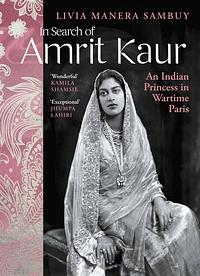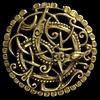Take a photo of a barcode or cover
informative
reflective
medium-paced
Didn’t finish! Maybe she wasn’t the best person to write this book?! For me it’s the factual errors that clinched it. Churidar is not a tunic. Randi is not a widow. “Bengalese” is Italian.
informative
inspiring
reflective
sad
medium-paced
Amrit Kaur was the wife of the ruler of the princely state of Mandi during the early 20th century. Beautiful and wealthy, she moved in elite circles in India and Europe before leaving her family in the 1930s and moving to Paris. During the war, she spent time in a Nazi internment camp at Besançon, accused of complicity in helping Jews escape persecution. Although her family was able to secure her release, her health was broken by her experiences and she died in London in the late 1940s.
This is basically what Livia Manera Sambuy knows about Amrit Kaur at the beginning of her book, and it's largely what she knows about her at the end. Hence, I suppose, the title: the fact that this is called In Search of Amrit Kaur should perhaps clue us in from the beginning that Sambuy was working with a fragmentary source base long after most people who personally knew Amrit had died, and that much of what she was going to find were dead ends. I sympathise with that predicament of the historian!
Yet this was a deeply frustrating read in that, at least based on what Sambuy tells us about her research process/methods here, she was unfocused and unsystematic in her work. I'm not at all satisfied, based on what we're presented with here, that there aren't more sources out there about Amrit that went unplumbed. The book as a whole is unfocused and badly structured, full of endless digressions about things which sometimes provide context for Amrit's life and times and sometimes don't—I'm sorry, but I don't really care about the history of the trade in precious gems, or the cricketing career of her grandson, or the details of the '70s burlesque career or education history of a Californian woman who by chance came into possession of some of Amrit's belongings. (Or at least, I might, but not when they're getting in the way of what I picked this book up for. Well, no, I'd never be interested in the cricket.)
I would have ploughed on through this and called it an uninspired but okay read, though, if not for what happened about 75% of the way through the book, when Sambuy revealsthat a cache of materials she finds in a suitcase which had once belonged to Amrit shows that the reason why she left her family was because she entered into a long-term relationship with a wealthy American widow—and then proceeds to do absolutely nothing with this revelation. If I was writing about this topic, I'd start with the suitcase and use it to build out Amrit's world and contextualise her as a queer Indian woman in this period—not spend pages and pages writing about her jewels (the least interesting part of her history) and then gloss over her sexuality with a sentence or two about how aristocrats at the time just accepted lesbian relationships, unlike the petty bourgeoisie! What?
Maybe one day Amrit Kaur will get a biography which doe her justice—but this book isn't it.
This is basically what Livia Manera Sambuy knows about Amrit Kaur at the beginning of her book, and it's largely what she knows about her at the end. Hence, I suppose, the title: the fact that this is called In Search of Amrit Kaur should perhaps clue us in from the beginning that Sambuy was working with a fragmentary source base long after most people who personally knew Amrit had died, and that much of what she was going to find were dead ends. I sympathise with that predicament of the historian!
Yet this was a deeply frustrating read in that, at least based on what Sambuy tells us about her research process/methods here, she was unfocused and unsystematic in her work. I'm not at all satisfied, based on what we're presented with here, that there aren't more sources out there about Amrit that went unplumbed. The book as a whole is unfocused and badly structured, full of endless digressions about things which sometimes provide context for Amrit's life and times and sometimes don't—I'm sorry, but I don't really care about the history of the trade in precious gems, or the cricketing career of her grandson, or the details of the '70s burlesque career or education history of a Californian woman who by chance came into possession of some of Amrit's belongings. (Or at least, I might, but not when they're getting in the way of what I picked this book up for. Well, no, I'd never be interested in the cricket.)
I would have ploughed on through this and called it an uninspired but okay read, though, if not for what happened about 75% of the way through the book, when Sambuy reveals
Maybe one day Amrit Kaur will get a biography which doe her justice—but this book isn't it.
I just cannot with the exoticization and pandering to colonialism. Don't bother!
adventurous
informative
lighthearted
slow-paced
Graphic: Abandonment, War
Moderate: Death, Grief, Death of parent
emotional
informative
reflective
slow-paced




